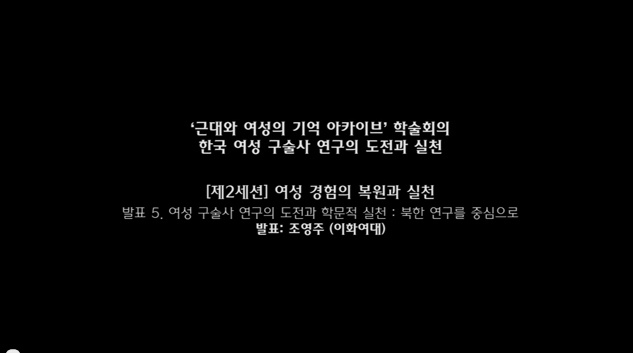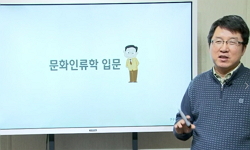1950~60년대 명동 다방들은 문학예술의 비공식적 장의 역할을 했으며 문인들에게 ‘명동 시절’이라고 회고되는 하나의 공통 기억을 이루고 있다. 다방 공간은 기존에 다방 문화에 부 과되었...
http://chineseinput.net/에서 pinyin(병음)방식으로 중국어를 변환할 수 있습니다.
변환된 중국어를 복사하여 사용하시면 됩니다.
- 中文 을 입력하시려면 zhongwen을 입력하시고 space를누르시면됩니다.
- 北京 을 입력하시려면 beijing을 입력하시고 space를 누르시면 됩니다.

1950~60년대와 ‘명동시절’의 기억 - 구술채록 기반 문예이면사 연구 = Memories of the 1950s-60s and the ‘Myeong-dong Era’ - A Study of the Unofficial Literary History Based on Oral Records
한글로보기https://www.riss.kr/link?id=A109285298
-
저자
김지윤 (상명대학교)
- 발행기관
- 학술지명
- 권호사항
-
발행연도
2024
-
작성언어
Korean
-
주제어
명동 ; 다방 ; 문예이면사 ; 구술채록 ; 구술사 ; 김종원 ; 김녕희 ; 1950~60년대 ; 생애사 ; Myeong-dong ; teahouses ; literary behind-the-scenes ; oral history ; oral records ; Kim Jong-won ; Kim Nyeong-hee ; 1950s-60s ; life history.
-
등재정보
KCI등재
-
자료형태
학술저널
-
수록면
31-64(34쪽)
- 제공처
-
0
상세조회 -
0
다운로드
부가정보
국문 초록 (Abstract)
이 연구를 위한 구술채록의 구술자는 시인이자 영화평론가인 김종원과 소설가 김녕희인데, 기존 연구가 부족하여 선행 연구를 보충하는 학술연구의 의의가 있다. 등단을 전후하여 신인 에 이르기까지 그들의 문학 활동 초기에 경험한 ‘명동시절’에 대한 생생한 구술은 ‘명동 시절’ 이 당시 자신들을 포함한 젊은 문학도들과 신진 작가들에게 어떤 영향을 주었고 다양한 문화 예술인들이 자연스럽게 교류하였던 자생적이고 자유로운 명동의 공간들이 그들에게 어떠한 문화적 토양이 되었는지를 잘 나타내준다. 또한 이 연구는 문단의 ‘명동시대’와 연극영화의 연결점을 드러내고, 명동 공간의 젊은 여성문인들을 살펴보며 50~60년대 명동 공간에 대한 또 다른 의미 부여와 새로운 관점을 제공하려 했다.
1950~60년대 명동 다방들은 문학예술의 비공식적 장의 역할을 했으며 문인들에게 ‘명동 시절’이라고 회고되는 하나의 공통 기억을 이루고 있다. 다방 공간은 기존에 다방 문화에 부 과되었던 편견이나 청춘, 낭만, 예술혼 같은 피상적인 키워드를 넘어 문학인들이 제도권 바깥 에서 궁핍한 시대를 헤쳐나가고자 한 역동적인 장이었으며 ‘명동시절’의 기억은 자생적 생태 계와 문화 연대를 형성하려 했던 한국문학사의 중요한 풍경을 담고 있다. 이 논문은 당시의 명동 다방 공간과 사람들에 대한 기억을 복원하고, 생애사와 관계망의 다양한 맥락을 섬세하 게 드러내는 구술채록연구의 특성을 살려 기록된 문학사의 빈틈을 채우려는 목표를 가지고 있다. 심층면접을 통한 구술채록을 주된 연구방법으로 하는 문예이면사 연구이며, 직접 진행 한 인터뷰 녹취를 기반으로 하되 구술 내용을 파악하여 분석하기 위해 구술자의 회고록, 언론 보도, 관련 문헌 등을 다양하게 검토했다. 이를 통해 아직 충분한 연구가 이루어지지 못한 당대의 다방 공간을 문학사적으로 주목해 기존 연구의 폭을 넓히고 작가 생애사 연구를 보완 할 수 있는 자료를 확보하려 하는 것이다.
이 연구를 위한 구술채록의 구술자는 시인이자 영화평론가인 김종원과 소설가 김녕희인데, 기존 연구가 부족하여 선행 연구를 보충하는 학술연구의 의의가 있다. 등단을 전후하여 신인 에 이르기까지 그들의 문학 활동 초기에 경험한 ‘명동시절’에 대한 생생한 구술은 ‘명동 시절’ 이 당시 자신들을 포함한 젊은 문학도들과 신진 작가들에게 어떤 영향을 주었고 다양한 문화 예술인들이 자연스럽게 교류하였던 자생적이고 자유로운 명동의 공간들이 그들에게 어떠한 문화적 토양이 되었는지를 잘 나타내준다. 또한 이 연구는 문단의 ‘명동시대’와 연극영화의 연결점을 드러내고, 명동 공간의 젊은 여성문인들을 살펴보며 50~60년대 명동 공간에 대한 또 다른 의미 부여와 새로운 관점을 제공하려 했다.
다국어 초록 (Multilingual Abstract)
During the 1950s and 60s, Myeong-dong teahouses served as informal cultural and artistic hubs, forming a shared memory for writers known as the ‘Myeong-dong era’. This study aims to reconstruct the memories of Myeong-dong teahouses and the people ...
During the 1950s and 60s, Myeong-dong teahouses served as informal cultural and artistic hubs, forming a shared memory for writers known as the ‘Myeong-dong era’. This study aims to reconstruct the memories of Myeong-dong teahouses and the people who frequented them during that time, supplementing documented literary history by leveraging the unique characteristics of oral history research that delicately reveals the diverse contexts of personal life stories and relationship networks. This research is a literary behind-the-scenes study that primarily uses in-depth interviews as its main research method. The study is based on interviews conducted with poets and film critics Kim Jong-won and novelist Kim Nyeong-hee, whose vivid recollections of the ‘Myeong-dong era’ during the early stages of their literary careers—both before and after their debuts—illustrate the cultural impact of Myeong-dong on young literary enthusiasts and emerging writers of the time. The organically self-sustaining and free spaces of Myeong-dong provided fertile cultural ground where various artists naturally interacted. Additionally, this research aims to reveal the connections between the literary ‘Myeong-dong era’ and theater/film, while also highlighting young female writers in Myeong-dong, thus offering new perspectives and meanings about the spaces of Myeong-dong in the 1950s and 60s.
동일학술지(권/호) 다른 논문
-
한국계 미국 작가의 디아스포라 문학의 번역: 이창래의 Native Speaker 와 이민진의 Pachinko를 중심으로
- 세계문학비교학회
- 이형진
- 2024
- KCI등재
-
언어에 저항하는 언어 - 블랑쇼의 ‘카오스의 글쓰기’에 관한 소고
- 세계문학비교학회
- 송태미
- 2024
- KCI등재
-
- 세계문학비교학회
- 박남용
- 2024
- KCI등재
-
세기의 전환기 영국 가정 문제극에 나타난 ‘과거가 있는 여자’ 주제의 현대성과 한계
- 세계문학비교학회
- 박정만
- 2024
- KCI등재




 KCI
KCI KISS
KISS





